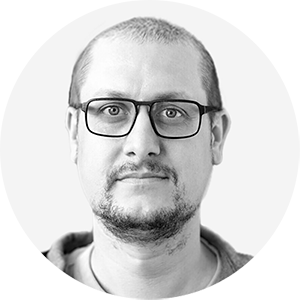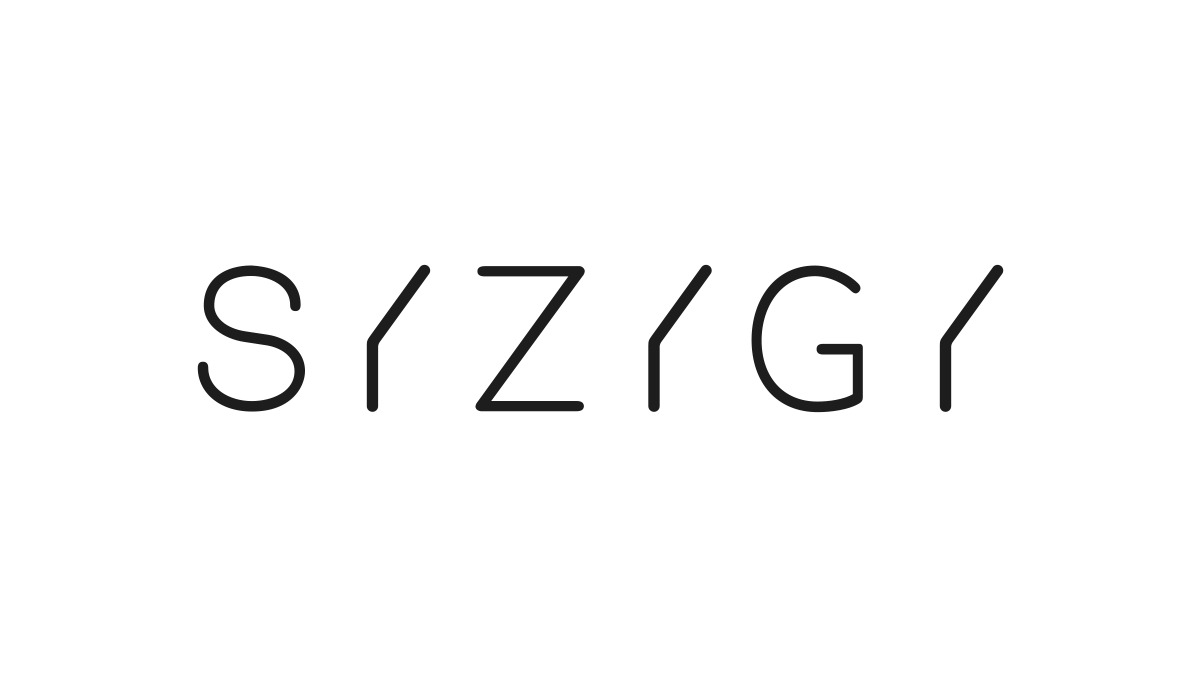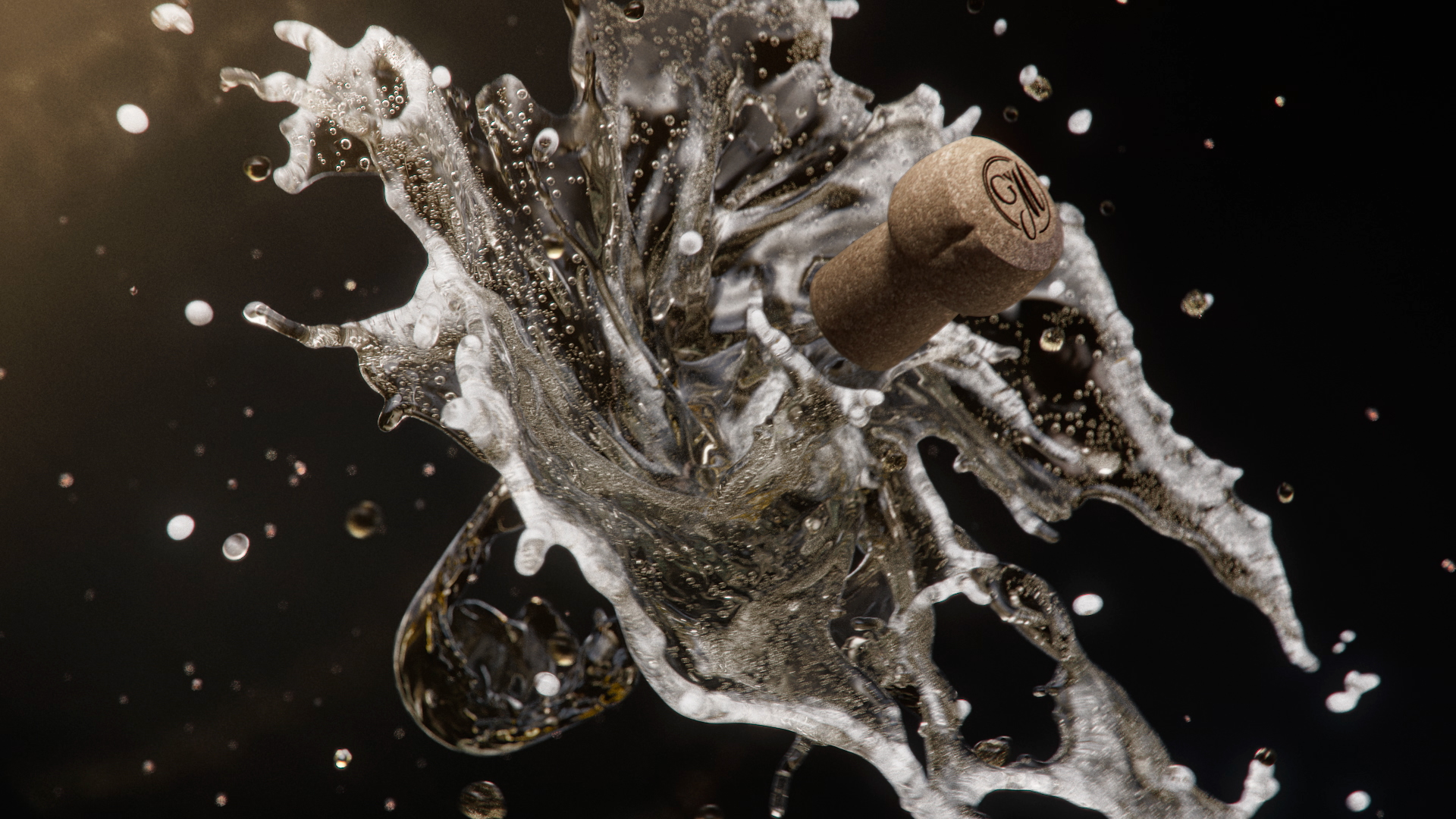Why? Because it wouldn’t have been doable any other way. For HYMER, we travelled back through the decades, showcased vehicles that are no longer made and used AI to create a photo shoot that really pushed the envelope of what is possible. The results made us hungry for more.
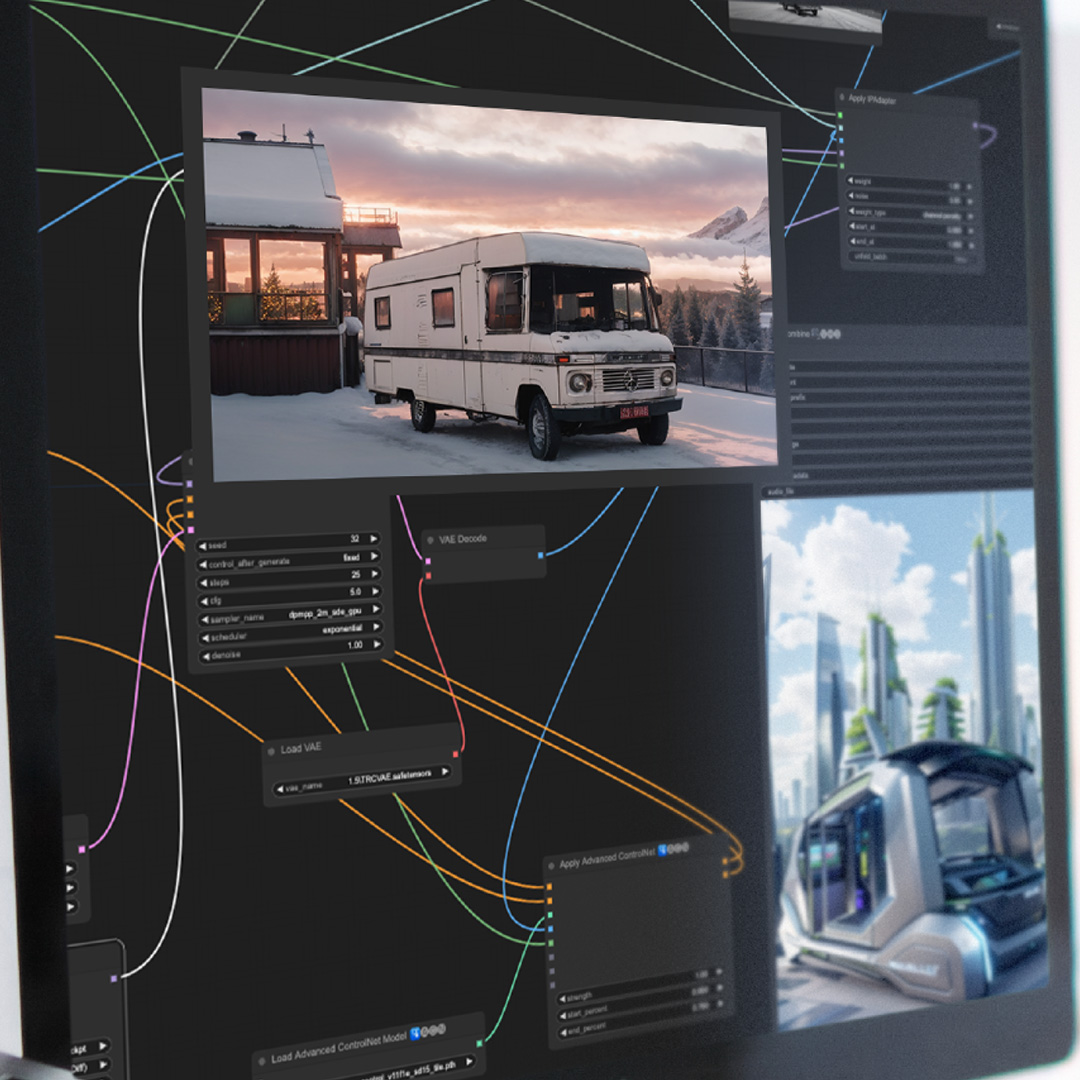
An impossible photo shoot?
For Christmas, HYMER wanted to reproduce its entire product history as a digital experience. The particular challenge here was to depict older vehicles in the same high-end quality as the new products. Not only that, there weren’t any vintage models to take pictures of; all we had were photos from the Hymer Museum – impossible, surely?
AI-generated images made huge strides in 2023, delivering impressive results. But when a brief calls for high-end images, the usability of such generated content has significant limitations.
We are creating an environment in which we use artificial intelligence to generate content, but responsibility for monitoring the result always resides with human beings. It’s rather like having a pilot and a co-pilot. The tough requirements mean that flawed images (containing what are referred to as artefacts and hallucinations) are totally unacceptable. Products and their features must match the original down to the last detail, and newly generated assets shouldn’t include anything that would cast doubt on the originality of the products.
The vision always comes first
Artificial intelligence generates images for us – not visions or ideas. That makes it all the more important for us to go into the production phase with a clear idea of what the final images should look like. We’re not just talking about the formal aspects (composition and subject matter) but more particularly about conformity with the brand and faithfulness to the original products. This entails a broadening of creative focus in the process. The more we use generative AI for production purposes, the more crucial it becomes to describe the creative idea and plans in detail up front. After all, if we have a clear idea of the result we can set the necessary parameters for generative AI and give it the right input to ensure that the result complies with the requirements.
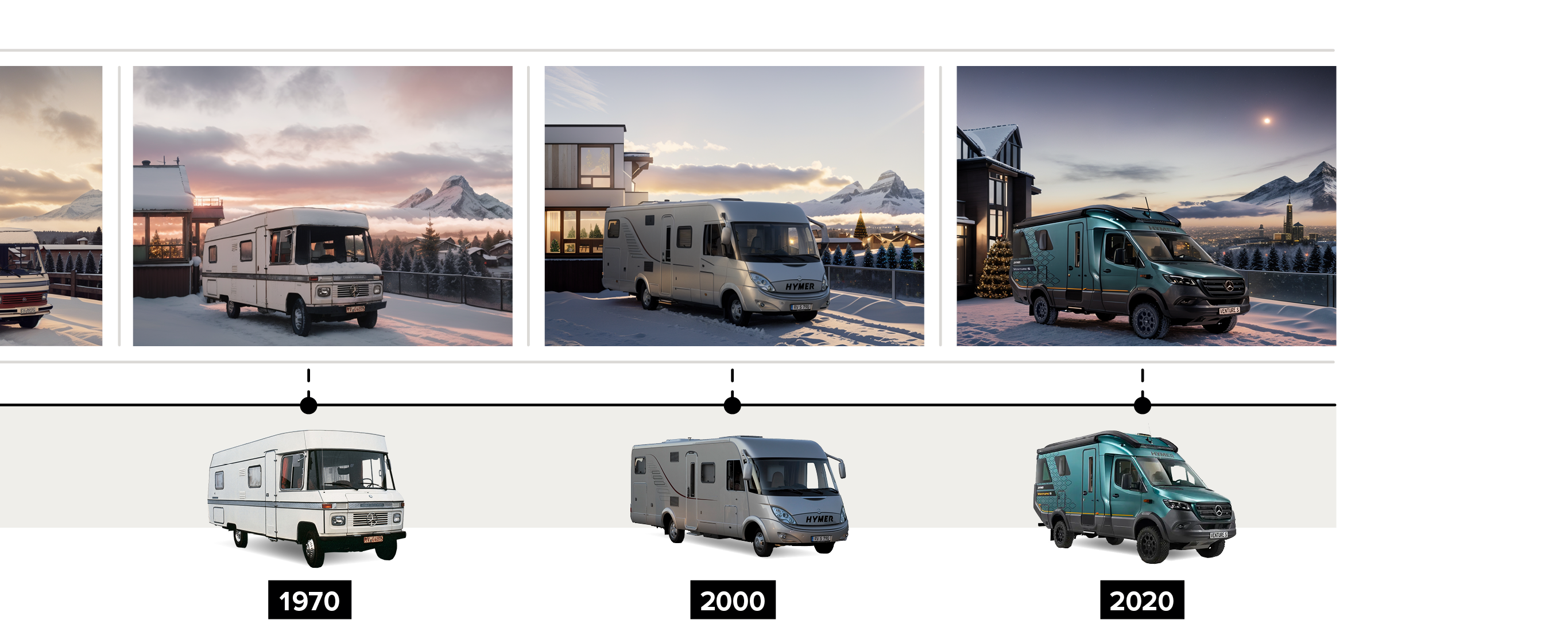
I never thought I’d be able to experience our old HYMER models again like this.
Hitting new productivity heights with generative AI as the co-pilot
The entire production process is based on what the creative team is trying to achieve. This brief takes the form of prompt, image arrangement and masking for image generation. In this way, we define how the result is to be structured: which element is to be positioned where and how detail, perspective, camera lens, colour profile, time of day, light conditions and weather will interact. All the key aspects that we are familiar with from production plans for photo shoots or elaborate 3D renderings can and must feed into the creative image generation process.
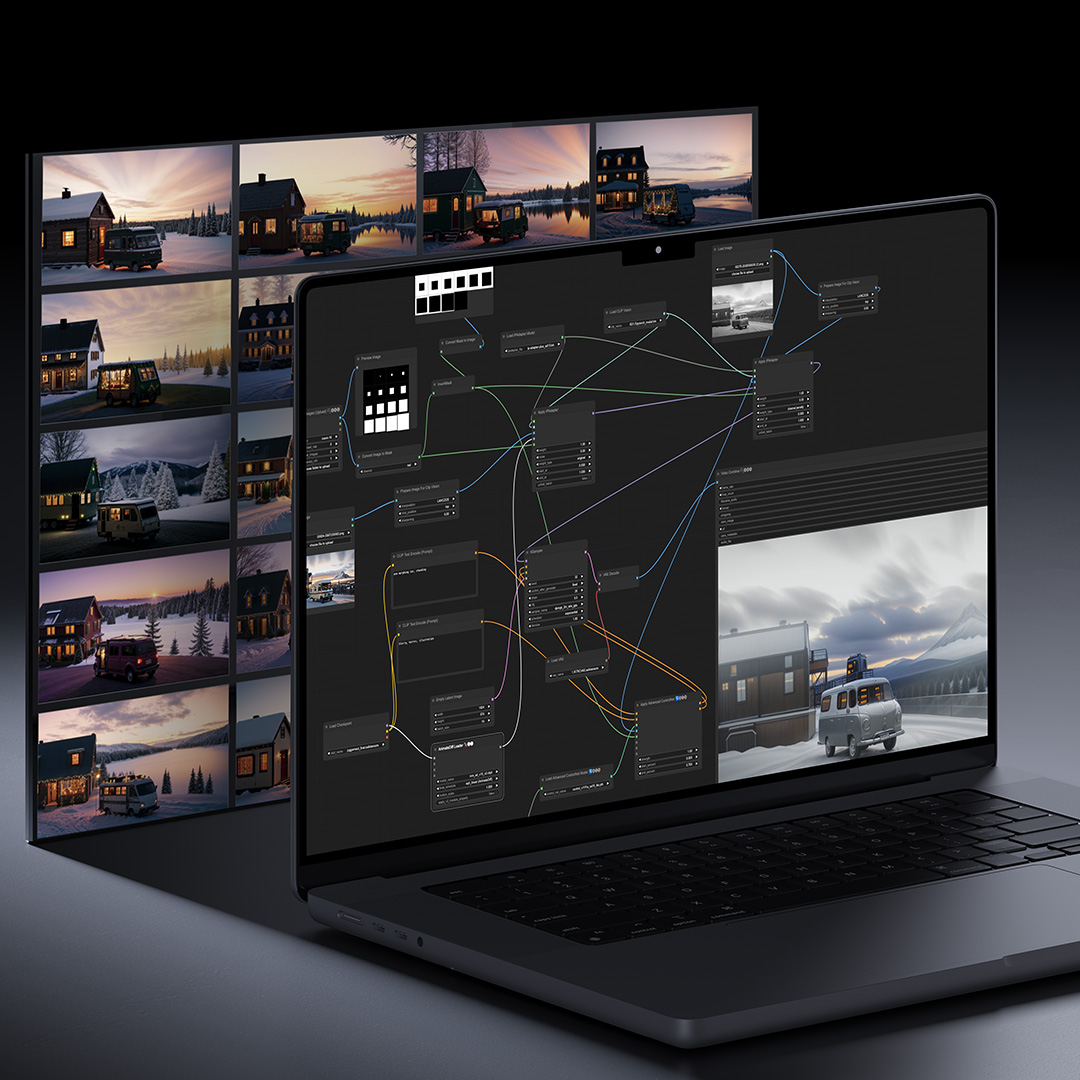
- We start by producing a schematic template and position a product cut-out in the scene.
- We then use Image2Image and Prompt Engineering to generate images until the content of the creative idea is fully implemented. As this phase requires greater denoising strength, unwanted artefacts are often created.
- The generated output is reviewed by the art director and assessed in terms of its creative quality and faithfulness to the product. Any flaws in the images are then manually retouched.
- The corrected image is reworked again using Image2Image, this time with lower denoising strength, and generated in higher quality but without distorting the content.
- We then round the production process off with quality assurance in relation to both content and form.
Learning to monitor the results
While looking for a solution, we came up with a workflow that allows us to control the results in the required detail. An iterative, dialogic process involving both humans and AI makes it possible to perfect the initial image until we get exactly what we want – step by step.
![]()
HYMER was just the start. This journey may one day lead to personalisation and dynamic content in real time.
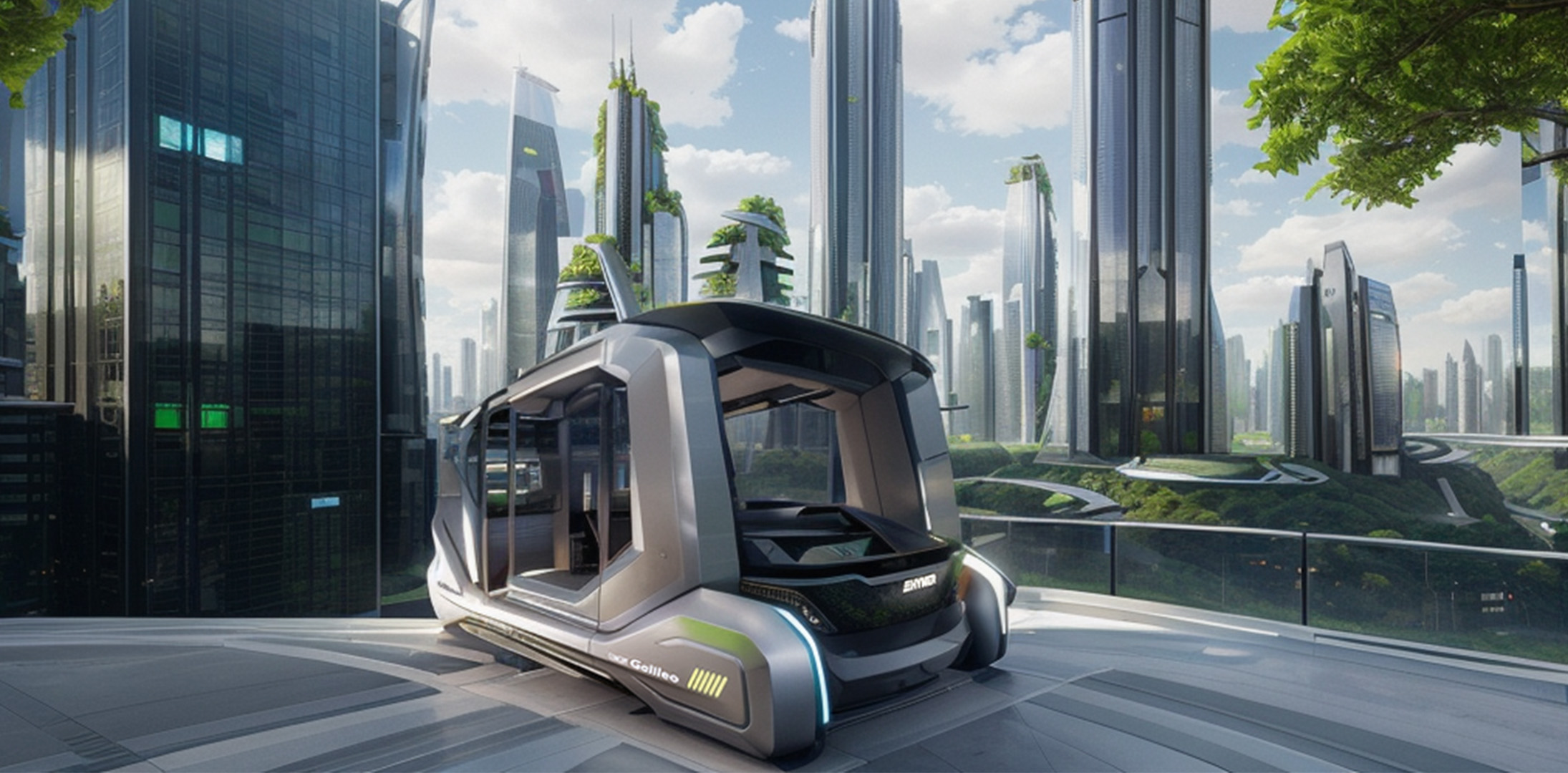
Time to think big
The impossible photo shoot for HYMER was a huge success. Genuine vintage models in high-end visual quality have now taken their place alongside the company’s latest premium vehicles. Importantly, our new AI production pipeline gives us the ability to offer many other clients significant added value. Faster production means that personalised experiences and dynamic content are closer to being achieved than ever before. The wide range of options available to us are already enriching our ideation process. It could just be a matter of time before we find ourselves handling another project that was previously deemed impossible.
